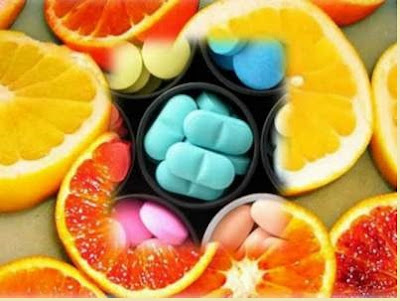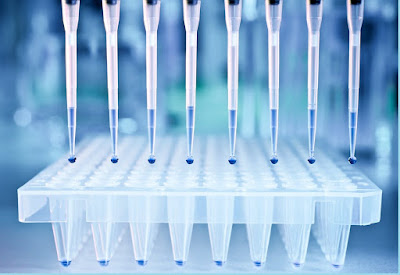When should I start taking vitamins.
The insomnia was at work and feeling overwhelmed. Perhaps you have a vitamin deficiency? Doctors called the 5 basic signs that will help to determine this.
Weak nails and hair
There are a number of factors that contribute to brittle hair and nails. One of the most common reasons is the lack of Biotin also known as vitamin B7, which helps the body convert food into energy. Prolonged use of certain medications can lead to deficiency of vitamin B7.
Cracks in corner of mouth
Lesions of the mouth or the area around it can be an indicator of lack of vitamins. People suffering from ulcers in corners of mouth twice as likely to lack iron and vitamins B1 and B2. If you have similar symptoms or strange “cracks” in your mouth, you should try to add in your diet more green vegetables and poultry.
All about health tips - truehealthtips4u.blogspot.com
You can find here all kinds of health tips and solution of health problems.
Sunday, February 10, 2019
Self-Compassion Exercises Show Physical, Psychological Benefits
Taking some time to think kind thoughts about yourself and loved ones has psychological and physical benefits, according to a new U.K. study.
Investigators at the Universities of Exeter and Oxford discovered taking part in self-compassion exercises can ease the body’s threat response, lowering heart rate and bolstering the immune system.
“Previous research has found that self-compassion was related to higher levels of well-being and better mental health, but we didn’t know why,” said researcher Dr. Anke Karl.
“Our study is helping us understand the mechanism of how being kind to yourself when things go wrong could be beneficial in psychological treatments. By switching off our threat response, we boost our immune systems and give ourselves the best chance of healing.
The study appears in the journal Clinical Psychological Science.
Investigators at the Universities of Exeter and Oxford discovered taking part in self-compassion exercises can ease the body’s threat response, lowering heart rate and bolstering the immune system.
“Previous research has found that self-compassion was related to higher levels of well-being and better mental health, but we didn’t know why,” said researcher Dr. Anke Karl.
“Our study is helping us understand the mechanism of how being kind to yourself when things go wrong could be beneficial in psychological treatments. By switching off our threat response, we boost our immune systems and give ourselves the best chance of healing.
The study appears in the journal Clinical Psychological Science.
Fake News Could be Injurious to Health
Along with the Hippocratic oath, the MBBS curriculum has a mantra: bar God, all must provide data. A good physician treats patients based on scientific principles derived from solid evidence. The physician’s personal experience may embellish or temper these principles, but should not be ‘contrary’ to them.
In India, the mantra of scientific data and evidence is often not the basis of beliefs. The attraction of alternative, unscientific treatment methods has been irresistible. Aided by social media, ‘cure-mongers’, ‘quacks’ and ‘diet gurus’ issue medical diktats. Some are confused, and others believe them.
One hoax relates to chronic diseases such as diabetes. The lure of a complete cure is greater than boring, often predictable medical advice. In addition, the effort needed to sustain lifestyle changes often pushes people to ‘miracle remedies’ that free them from lifelong restrictions.
In India, the mantra of scientific data and evidence is often not the basis of beliefs. The attraction of alternative, unscientific treatment methods has been irresistible. Aided by social media, ‘cure-mongers’, ‘quacks’ and ‘diet gurus’ issue medical diktats. Some are confused, and others believe them.
One hoax relates to chronic diseases such as diabetes. The lure of a complete cure is greater than boring, often predictable medical advice. In addition, the effort needed to sustain lifestyle changes often pushes people to ‘miracle remedies’ that free them from lifelong restrictions.
Friday, February 8, 2019
Stroke Cases See a Surge in Bengaluru; Doctors Blame Stress, Sedentary Lifestyle
The IT city of Bengaluru has seen a 15-20 per cent rise in the number of stroke patients and doctors say this is all due to a variety of factors including sedentary lifestyle and eating junk food. Also, there is a significant rise in strokes in the young IT crowd. Every month, nearly 50-60 patients of acute strokes are admitted to city hospitals.
Nowadays, strokes in young people aged below 45 is on the rise, says Dr Praveen Kumar S, HoD, Neurology, Victoria Hospital. "This is due to stress, lifestyle and dietary habits which further leads to brain and heart diseases. So many modifiable, non-modifiable, genetic factors and blood-related disorders too are responsible for strokes."
Nowadays, strokes in young people aged below 45 is on the rise, says Dr Praveen Kumar S, HoD, Neurology, Victoria Hospital. "This is due to stress, lifestyle and dietary habits which further leads to brain and heart diseases. So many modifiable, non-modifiable, genetic factors and blood-related disorders too are responsible for strokes."
Tests Suggest Scientists Achieved 1st ‘In Body’ Gene Editing
Scientists think they have achieved the first gene editing inside the body, altering DNA in adults to try to treat a disease, although it’s too soon to know if this will help.
Preliminary results suggest that two men with a rare disorder now have a corrective gene at very low levels, which may not be enough to make the therapy a success.
Still, it’s a scientific milestone toward one day doctoring DNA to treat many diseases caused by faulty genes.
“This is a first step,” said Dr. Joseph Muenzer of the University of North Carolina at Chapel Hill, who helped test the treatment. “It’s just not potent enough.”
He gave the results Thursday at a conference in Orlando, Florida, and has consulted for the therapy’s maker, California-based Sangamo Therapeutics. Researchers are working on a stronger version of the treatment.
Gene editing is intended as a more precise way to do gene therapy, to disable a bad gene or supply a good one that’s missing. Trying it in adults to treat diseases is not controversial and the DNA changes do not pass to future generations, unlike the recent case of a Chinese scientist who claims to have edited twin girls’ genes when they were embryos.
Preliminary results suggest that two men with a rare disorder now have a corrective gene at very low levels, which may not be enough to make the therapy a success.
Still, it’s a scientific milestone toward one day doctoring DNA to treat many diseases caused by faulty genes.
“This is a first step,” said Dr. Joseph Muenzer of the University of North Carolina at Chapel Hill, who helped test the treatment. “It’s just not potent enough.”
He gave the results Thursday at a conference in Orlando, Florida, and has consulted for the therapy’s maker, California-based Sangamo Therapeutics. Researchers are working on a stronger version of the treatment.
Gene editing is intended as a more precise way to do gene therapy, to disable a bad gene or supply a good one that’s missing. Trying it in adults to treat diseases is not controversial and the DNA changes do not pass to future generations, unlike the recent case of a Chinese scientist who claims to have edited twin girls’ genes when they were embryos.
Cerebral Palsy Patients' Lung Disease Death Risk 14 Times Higher
Adults with cerebral palsy in England are 14 times more likely to die from respiratory conditions, reveals a new study backed by Brunel University London.
The same group are also at three times higher risk of heart disease death than the general population, said the research.
It is the first time scientists can put a figure on the relative risk of death from different causes among people with cerebral palsy in England.
One in every 400 children in England has cerebral palsy, which affects muscle control and movement. It's mostly caused by brain injury before, during or after birth.
The same group are also at three times higher risk of heart disease death than the general population, said the research.
It is the first time scientists can put a figure on the relative risk of death from different causes among people with cerebral palsy in England.
One in every 400 children in England has cerebral palsy, which affects muscle control and movement. It's mostly caused by brain injury before, during or after birth.
RNAs Play Key Role in Protein Aggregation and in Neurodegenerative Disease
New research reveals RNAs, which are crucial for cells to produce proteins, are also involved in protein aggregation, where proteins do not fold properly and 'clump' together into aggregates. If cells cannot clear these away, they become toxic and prevent cells working properly. This discovery, led by scientists at the Centre for Genomic Regulation (CRG) in Barcelona, reveals that RNAs act as a 'scaffold' to hold several proteins that stick to RNAs together, and that certain RNA molecules with distinct properties attract more proteins and encourage proteins to aggregate. They also investigated how an RNA called FMR1 is implicated in a neurodegenerative disease called Fragile X Tremor Syndrome, or FXTAS.
Many neurodegenerative diseases are linked to protein aggregation, including amyotrophic lateral sclerosis and Alzheimer's disease. We know that proteins can form toxic aggregates, but until now, the contribution of nucleic acid molecules such as RNA has been up for debate.
Many neurodegenerative diseases are linked to protein aggregation, including amyotrophic lateral sclerosis and Alzheimer's disease. We know that proteins can form toxic aggregates, but until now, the contribution of nucleic acid molecules such as RNA has been up for debate.
Tips for Living With Type 1 Diabetes
Figuring out how to manage Type 1 diabetes is a challenge for anyone. The disease strikes without warning, and the thought of its many potential complications can be overwhelming. “You hear about how diabetes can affect your eyes, kidneys, feet and heart. People assume everyone will get the same complications and they get scared,” says Dr. Umesh Masharani, an endocrinologist and professor of medicine at the University of California—San Francisco.
But don’t jump to conclusions about what it is like to live with Type 1 diabetes. “You can have a long and healthy life as long as you take care of your diabetes,” Masharani says.
I Have Type 1 Diabetes
Type 1 diabetes is an autoimmune condition that occurs when the body mistakenly attacks cells (in the pancreas) that make insulin. We rely on insulin to get sugar from digested carbohydrates (glucose) into cells so they can convert it into energy or store it in the muscles, fat and liver.
But don’t jump to conclusions about what it is like to live with Type 1 diabetes. “You can have a long and healthy life as long as you take care of your diabetes,” Masharani says.
I Have Type 1 Diabetes
Type 1 diabetes is an autoimmune condition that occurs when the body mistakenly attacks cells (in the pancreas) that make insulin. We rely on insulin to get sugar from digested carbohydrates (glucose) into cells so they can convert it into energy or store it in the muscles, fat and liver.
Thursday, February 7, 2019
Toronto Partnership to Create Fast Diagnostic Tools to Assess Donated Lungs for Transplant
Plans to create and license diagnostic tools to help transplant surgeons rapidly and accurately assess the health of a lung before it is transplanted are the basis of two research and development agreements between SQI Diagnostics and Toronto’s University Health Network (UHN), in Canada.
There is a significant gap between the demand and availability of lungs for transplant. It’s estimated that one in five patients waiting for a lung transplant will die before a suitable organ becomes available. In addition, lungs are extremely susceptible to injury and have one of the lowest utilization rates, at about 20 percent, compared with other solid organs.
Therefore, there is an urgent need for techniques to accurately monitor the health of potentially suitable donor lungs to increase the odds of successful postoperative outcomes.
There is a significant gap between the demand and availability of lungs for transplant. It’s estimated that one in five patients waiting for a lung transplant will die before a suitable organ becomes available. In addition, lungs are extremely susceptible to injury and have one of the lowest utilization rates, at about 20 percent, compared with other solid organs.
Therefore, there is an urgent need for techniques to accurately monitor the health of potentially suitable donor lungs to increase the odds of successful postoperative outcomes.
Being kind to yourself has mental and physical benefits
Taking time to think kind thoughts about yourself and loved ones has psychological and physical benefits, new research suggests.
A study by the Universities of Exeter and Oxford has found that taking part in self-compassion exercises calms the heart rate, switching off the body's threat response. Previous studies have shown that this threat response damages the immune system. Researchers believe the ability to switch off this response may lower the risk of disease.
In the study, published in the journal Clinical Psychological Science, 135 healthy University of Exeter students were divided into five groups, and members of each group heard a different set of audio instructions. The team took physical measurements of heart rate and sweat response, and asked participants to report how they were feeling. Questions included how safe they felt, how likely they were to be kind to themselves and how connected they felt to others.
A study by the Universities of Exeter and Oxford has found that taking part in self-compassion exercises calms the heart rate, switching off the body's threat response. Previous studies have shown that this threat response damages the immune system. Researchers believe the ability to switch off this response may lower the risk of disease.
In the study, published in the journal Clinical Psychological Science, 135 healthy University of Exeter students were divided into five groups, and members of each group heard a different set of audio instructions. The team took physical measurements of heart rate and sweat response, and asked participants to report how they were feeling. Questions included how safe they felt, how likely they were to be kind to themselves and how connected they felt to others.
Subscribe to:
Posts (Atom)









